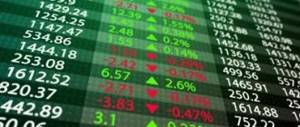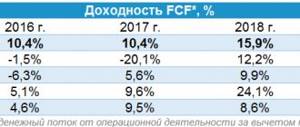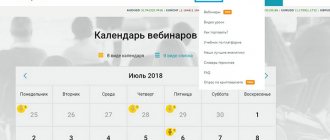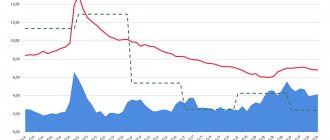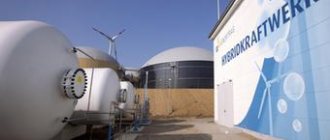Any entrepreneur strives to run his business in a growing market. This is easy to explain: the competition here is not so intense, because everyone can occupy their cell, therefore, the cost of products practically does not increase, but consumer demand increases, sales volume increases, and profits increase. Operating in a growing market during a crisis is a goal that many businessmen consider unrealistic to achieve. But some categories of Russian entrepreneurs have already entered growing markets that have not disappeared during the crisis. This is mainly the food industry, construction materials and transport business, but first things first.
Interest in online shopping is not a temporary effect
After the lockdown in the spring of 2021, the forced transition of users online led to an obvious increase in interest in online shopping. Yandex search queries in this segment from January to November 2020 show an increase of 93% compared to the same period last year.
Moreover, even after the restrictions were lifted - from June to November 2020 - interest in online shopping continued to increase and grew by more than one and a half times compared to the second half of 2019.
If we separately consider the number of requests from June to November 2020, in the “Delivery” category the increase was 65%, in the “Buy online” category – 21%, “Order online” – 37%.
Data Insight company studied market growth factors and built a forecast for the development of e-commerce for the next 5 years. According to the company, during 3 months of quarantine, at least 10 million new customers appeared in e-commerce, and most of them will continue to buy online. Data Insight calls another growth factor the transition to a remote form of work: 5-7 million people will remain remote, moving to distant suburbs or smaller cities where the offline assortment is limited. In general, the effect of the pandemic, according to Data Insight, will continue until 2024.
Kirill Shpara, head of the marketing research department at Yandex.Market:
“Buyers from Moscow, as well as from regions and small towns are now actively exploring online shopping. For example, according to the results of a joint study by Yandex.Market and GfK, in cities with a population of 100–500 thousand people, the share of online shoppers increased by 10% over the year. A store that has just gone online during the pandemic can independently organize federal delivery, but it will be quite labor-intensive and expensive. Marketplaces can offer more favorable rates and take over all the processes. Therefore, now the growth of interest in marketplaces is high among both sellers and buyers.”
The audience's readiness for online shopping no longer looks like a temporary consequence of the pandemic. Consumer habits of users are changing, and a new pattern of behavior on the Internet is being formed. Following the growing demand for online shopping, businesses are forced to reconsider their sales processes and models. There are changes in the media mix of advertising strategies, and following this, advertising investments change.
What does a growing bull market mean?
Anyone who follows the markets even a little will have at least once encountered such concepts as a “bull” market (characterized by rising prices) and a “bear” market (characterized by falling prices). Of course, there are several levels of both kinds. It is very important to consider these types of growing markets separately.
Bull market
This is a dynamically growing market, characterized by a gradual increase in price over a certain time period. There are typical bull markets,
which grow continuously over quite a long time. On the chart of such a market, the regression indicators, as a rule, tilt by 20-45 degrees.
There are also roaring bull markets.
On the chart of such a market, the regression indicators, as a rule, tilt by 50-70 degrees. This type of growing market represents what can be said to be a leap. Sometimes experts call it exponential, but this simply means that as price indicators increase, market growth rates also gain momentum. Growing markets of this kind do not form as often as typical ones. In addition, they are not so stable, and therefore are relatively short-lived.
Bear market
Characterized by lower prices. It cannot be called a growing market. There are typical bear markets,
plotted as a regression sloping downwards by 20-45 degrees. There has been a steady decline in the price indicator for quite a long time.
There are also panicky “bear” markets.
They also cannot be called growing markets, since the regression here goes down by 50-70 degrees, and in critical situations - even lower. The graph in this case is, one might say, a hole.
Panic bear markets typically occur as a consequence of large movements in money markets. However, like roaring bull markets, they are short-lived.
Cyclical market
It is not difficult to notice this type of growing market, despite the fact that it is not as common as the above types, but, as a rule, is a component of one of them. A cyclical market (as follows from the concept itself) undergoes changes within a certain price scale. Such a growing market, in terms of its indicators, first goes down, then goes up, forming a stable periodicity. Its main indicator when studied within a certain cycle is certain fluctuations between the maximum and minimum stages of the price setting factor. There are both almost imperceptible and minor ups and downs. When price margins are at their highest, these growth markets gain momentum.
Read the article: Non-resource exports using the example of Russia
How advertisers are responding to changes
According to the results of the ACAR study, the share of online channels in the advertising market in Russia in 2021 is growing against the backdrop of a decline in offline channels. Here's what the distribution looks like for three quarters of the current year:
The volume of the advertising market, according to ACAR research, is distributed as follows:
| Channel | Q1 2021, billion rubles | Q2 2021, billion rubles | III quarter 2021, billion rubles |
| A television | 43 | 31 | 37 |
| Radio | 2,9 | 1,7 | 2,9 |
| Press | 2,8 | 1,4 | 1,6 |
| Out of home | 11 | 3,9 | 7,2 |
| Internet | 56 | 53 | 62 |
Boris Omelnitsky, President of the IAB Russia Association, comments on the market situation:
“Advertising budgets follow the audience. Under the influence of the pandemic, the flow of people around outdoor advertising structures is also decreasing. The number of motorists listening to the radio in the mornings and evenings is decreasing, as is the number of readers of paper newspapers, which people are afraid to pick up, and therefore the volume of purchases in these channels is also decreasing. At the same time, the main sales channels are being transferred from semi-open offline to online, and any advertising communications on the Internet take first place in terms of investment. At the same time, we are talking not only about performance advertising, but also about image advertising, since brands now need to compete for recognition on digital marketplaces.”
Similar results are found in the Nielsen study, which the company conducted among CEOs of the retail and FMCG market in May 2020:
- The company plans to invest the most resources in digital transformation, the development of online trading and IT infrastructure. Such estimates were provided by 65% of manufacturers and 85% of retailers.
- The development of online channels is a priority for the next 12 months: 87% of respondents expect online trading to grow.
- The majority of companies surveyed plan to prioritize investments in social networks and the Internet: 46% and 37% of respondents will respectively increase the amount of investment in these channels - these are the highest figures among other media channels. At the same time, companies plan to reduce costs on outdoor advertising (46%), television (43%) and radio (37%).
Lyudmila Bogolepova, Client Relations Director, iConText agency:
“Our clients traditionally focus on digital tools and online sales. This trend did not originate today—the market has long been moving toward the development of digital advertising channels. But in 2021, this has become especially relevant given new realities and economic changes. And statistics fully confirm this: the Internet turned out to be the most resistant to the new reality. That's why advertisers have been scrambling to transform their digital approaches throughout the year to improve the customer experience.
Many brands have started listing products on marketplaces as they have become a huge source of traffic in 2021. That is, those who do not have the opportunity to completely move their business online are thinking about how online influences offline sales and how to optimize the user journey to reduce the number of offline contacts with the brand.”
Evgeny Kuzmichev, director of e-commerce, MGCom agency:
“This year we have noted an increase in customer interest in digital tools. First of all, in those industries where online had to compensate for the decline in offline sales, and where the growth of online itself was explosive during the pandemic: in the e-grossery and pharma segments. For almost all clients, the share and absolute value of sales volume from the online channel is one of the most important indicators of development. Over this year, it has become clear that the share of online sales may not be 1–3%, but much more.
Of course, the dynamics of changes in this indicator strongly depend on the behavior of buyers. People's thinking has changed dramatically in 2021: so-called “new buyers” came online, who previously either only bought goods offline or ordered very little online.
All this ultimately allowed e-commerce to make a huge leap. In my opinion, the trend towards the development of e-com and online trading tools will certainly continue next year.”
Overall, increased demand for online shopping and increased advertising investment in online channels have become drivers of digital transformation in 2021. In the face of changing trends, it is especially important for businesses to invest in technology, in understanding the audience and the ability to work with it.
What should Russian car enthusiasts expect?
Experts suggest that by the end of 2021 the increase in the cost of cars will not exceed 15%. The deficit should be completely eliminated by then. No one can yet answer the question of when car prices will fall.
It is expected that in 2022 the market situation will only return to pre-crisis levels . You shouldn't expect a price collapse. There are no prerequisites for this.
There shouldn't be a sharp jump either. Most likely, sellers will initially keep the price at the level at which 2021 ends. This will be followed by a gradual increase in price.
Therefore, many experts call the beginning of next spring the most successful time to purchase transport. The answer to the question of whether cars will become cheaper in 2022 will most likely remain negative. Therefore, you should not postpone the purchase for a long time.
Collection methods and sources of information
There are several data sources that are useful when calculating market capacity.
- Open information is government statistics in your field, financial statements of companies, industry media.
- Marketing research and market analytics. Such information is mostly paid - you can buy ready-made reports or order unique ones for your area.
- Company data analytics. Available if the business publishes information about the production, distribution and sale of goods. By studying the major players in the field, we can draw indirect conclusions about the market capacity.
- Consumer assessment. To obtain data, the method of sociological research is used: a survey of potential and current customers is conducted, the level of consumption, the average purchase price, interest in choosing a brand or changing the market are studied.
- Consumption standards. These are regulatory documents that establish average data on product consumption according to experts and authorities. For example, the Ministry of Health publishes food consumption standards. By combining them with population data, it is possible to calculate the market capacity of the food industry in a particular region.
Trade
Alcohol markets on tap
Specialized alcohol retail is thriving in St. Petersburg. The city opens 50 wine and vodka stores a year, with the most active ones being discount alcohol markets.
In St. Petersburg, alcohol retail has been represented for many years by such chains as Aromatny Mir, Gradusy, Norman, Kaleidoscope of Beverages of the World, RosAl 24, and the companies continue to develop. A number of new players have also entered the market. In particular, the “Wine and Barrel” and “Bittern” chains appeared. The company developing the Estny neighborhood stores intends to open 70 to 100 Yesenin stores. Alcohol distributors Bastion Group of Companies opened Vignon alcohol markets, Spirtnoy Group of Companies entered retail under the Spirit Online brand.
Business diversification helps importers combat the consequences of the weakening ruble.
Even X5 Retail Group, which opened the first stores in the alcohol market format under the Pyatnitsa brand in St. Petersburg, is claiming a new niche.
50 alcohol markets open in the city a year, including both chain projects and individual outlets.
Growth by 10-12% depending on the segment
A number of experts predict that cars will rise in price by 10-20% in 2022 . The cost increase will be smooth. Experts believe that the main cause of the problem is the instability of the national currency. The cost of cars is significantly influenced by the price of foreign spare parts, and it is tied to the exchange rate.
Models in the low and middle price segments will rise in price especially significantly. Such models have low profitability and a large number of foreign components. Premium transport will suffer less significantly. It will rise in price by no more than 10%.
Stabilization of the market situation is planned for the summer months. This is the only period when car prices are highly likely to fall in 2022. In summer, people spend a lot of money on vacations and trips abroad.
Demand in the car market is falling . Manufacturers will want to encourage people to buy. They will offer flexible discount systems or preferential lending programs.
The most gradual increase in prices will be observed for transport produced in Russia. There is a risk of repeating the situation that happened six years ago. Then many companies decided to leave the market and move their production to other countries.
Two waves of price increases
According to Denis Petrunin, director of the AutoSpetsCenter Group of Companies, the demand for cars will decline.
And this is primarily due to the decrease in the purchasing power of citizens. Those who managed to save money will purchase transport now. The strengthening of the ruble will also not have a positive effect . It does not stimulate Russians to make purchases.
Price growth will most likely occur in two stages. Initially, there will be a 3-4% rise in price. This happens all the time, regardless of currency fluctuations. Experts attribute this to technological progress. The models being produced have more and more functions and capabilities, and therefore the price for them is increasing.
By the end of the period, the cost will increase by another 7-8%. This is due to a decrease in demand. Manufacturers will want to compensate for losses incurred due to a decrease in the number of cars sold. Thus, according to the forecast, car prices in 2022 in Russia will increase by 10–12%.
Forms of organization
For normal functioning, the market needs independent organizations equipped with means of communication, on the basis of which it is possible to exchange goods. Forms of market organization are how, in what place and form its work is carried out, for example, a store, a fair, an auction, a terminal.
Popular forms of market organization:
- Exchanges are a union of legal entities and individuals who conduct wholesale trading operations; prices for products are set by competition.
- An auction is a public auction, where the seller increases the price due to competition from buyers.
- Exhibitions - thematic exhibitions of the latest technologies, cars, various types of goods and services. They organize small courses, seminars, meetings for the purpose of exchanging experiences and consultations.
- Fairs are events that are organized for purchases and sales in all industries. There are international, all-Russian and regional fairs.
Market subjects are those who participate in the exchange of goods (sellers and buyers). Market objects are what are exchanged for (money, goods, services).
IT
Offshore for programmers
The winners were those IT companies that, even before the crisis, found foreign clients - buyers of software development services. Later, establishing contact became somewhat more difficult due to the aggravated international situation. However, caution is typical for clients who have never had experience working with Russia. All the same, Russian outsourcing in the field of software remains in demand, and even more so with the ruble as it is now.
Exports to the markets of developing countries are especially growing. The solutions of Russian companies in the field of security are in demand - this is something that domestic programmers are traditionally strong at.
According to the forecast of Russoft (there are no exact official data yet), at the end of 2015, the volume of foreign sales of software from Russian companies reached $6.8-7 billion (an increase of 13-16%).
To ensure stable growth in turnover, Russian software development companies must have an export share of at least 50% of their revenue.
The growth of foreign sales of software products from Russian manufacturers reaches 16 percent.
Pharmaceuticals
Growth pills
The government adopted the policy of import substitution in pharmaceuticals several years ago, and now it is bearing fruit. At the end of last year, Vertex reported an increase in sales by 30%, to 3.4 billion rubles, Biocad - by 20%, its turnover exceeded 10 billion rubles.
Vertex opened a 2.2 billion ruble plant in Novoorlovskaya last summer. The Solopharm pharmaceutical plant expected to double its capacity by launching a third line.
The launch of facilities, MB NPK Cytomed and Orion Medic, is scheduled for the summer.
Another important growth driver is contract manufacturing. So, NTFF Polisan LLC is following this path. In 2015, the manufacturer agreed with Bayer to produce its drugs on its site, and a similar agreement was signed with Pfizer. Manufacturers have room to grow: in monetary terms, foreign-made drugs prevail in Russia, their share is 73%.
The sales growth of St. Petersburg pharmaceutical enterprises reaches 30 percent.
Standard & Poor's worsened its forecast for the Russian economy from growth to decline
191
Weak consumer demand remains a drag on economic growth. This is not surprising: real incomes of the population decreased by 4% over the year.
While politicians and experts are discussing the topic “are we at the bottom or not yet,” a number of industries are experiencing unprecedented growth - new players are emerging, new projects are being launched, and jobs are being created. For many businessmen (mainly from the real sector of the economy), changed market conditions have turned into new opportunities.
Manufacturers of medicines, agricultural products and certain types of food feel confident in the wave of import substitution. Thanks to the devaluation of the ruble, machine builders and software manufacturers are skimming the cream off export orders.
Microfinance organizations make money by helping the rapidly impoverished population. Numerous online trading portals are thriving, with the help of which citizens try to save on purchases. And the growing chains of alcohol markets are filling the stress of city residents with alcohol that is cheaper than in retail chains. In addition, compatriots switched from vacationing abroad to exploring their own country, which caused an increase in domestic tourism by 30%.
Finance
MFOs are increasing their momentum
Microfinance organizations are doing best in the financial industry. Against the backdrop of a decline in the issuance of bank loans, the volume of microcredit is only growing.
According to players’ estimates, the microloan market grew by about 15% over the past year, and in 2021 it will also show double-digit growth. In general, the market volume in St. Petersburg is estimated at 2.8 billion rubles, with 10-15% coming from loans issued by online companies. It is online lending that currently serves as the growth driver for this segment.
Microfinance experts say that the reasons for their success are that the industry has become more civilized over the past 2 years, which has benefited from the tightening of regulatory requirements, which, in particular, was reflected in the reduction of rates. Banks also began to refuse loans to clients more often, which increased the number of MFO clients. In addition, the decline in real incomes of the population forces consumers to apply for microloans more often.
The growth of microcredit volumes in St. Petersburg accounted for 15 percent, despite high rates.
